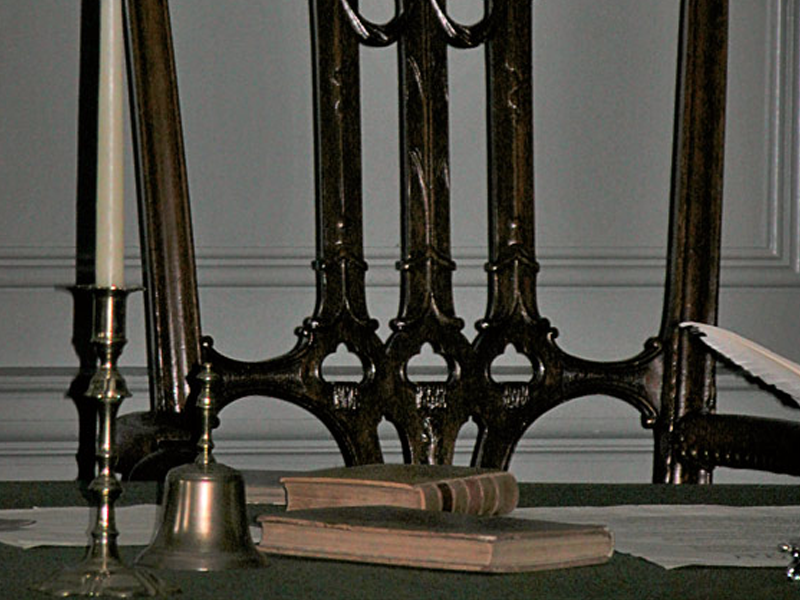
One of my favorite movies / musicals is 1776. This is a recount of the creation and signing of the Declaration of Independence. It portrayed the obstacles that John Adams in particular had in conveying his vision of independence and convincing others to join in the vision and also to join in the risks involved.
The musical was a large success, gaining a number of Tony awards, financial return (it ran on Broadway for 4 years and also became a successful movie). However, it also ran against convention and was initially turned down by many producers. At a time when the Broadway spectacular was popular, many scuffed at a musical using a cast of 25 men and 2 women.
But getting back to the show itself, it used a number of actual quotes and references documented by the founding fathers. From the show and other quotes I learned from visiting Philadelphia, I want to share two that I love to reference when thinking about its portrayal of a visionary idea and the journey of the visionary – in this case, John Adams.
They both take at the end, when the document is about to be signed. The first is from Ben Franklin. Throughout the convention, he has been constantly staring at the chair John Hancock has been sitting in (and the one George Washington would later use as President of the first Constitutional Convention)
When asked why, Franklin replies, “I’ve noticed that on the head of the chair is the top of the sun. I’ve spent this entire convention wondering if it was a rising or a setting sun. Now I know it is a setting sun.”
From this and other lessons from 1776, I’d like to offer 7 “lessons” on the visionary process:
- You have to believe the sun is rising. Vision takes faith that the best outcome will prevail and it needs a dedicated champion. Adams never lost faith in the idea of independence. He may have been frustrated by people, but not in the idea or the ideal
- You have to know that there is support for the vision – even if it is not from your compatriots. Adams knew that the people supported this idea. This was crucial because it was the people who would have to participate in its development. Similarly, new ideas and successful visions reflect growing needs and trends. Visions that are “ahead of their time,” will die or wait. Corporate visionaries must know that the marketplace will respond. It is the foundation for faith.
- You have to look for alliances. Adams knew he needed someone else to write the declaration, a state other than Massachusetts to move to consider the vote, and numerous other delegates to form initial support and to address their concerns early. This created strength when he met resistance from other states.
- You have to address obstacles, but keep the focus on the goal. Get alignment when possible so others join in the risk and in helping to overcome these obstacles. Recognize what you are up against and take appropriate steps, whether by using alliances or anticipating compromise. Adams had to give up the idea of abolishing slavery in the Declaration to satisfy the South. But the goal was to get independence first.
- You must be patient. Big ideas often meet big objections. It takes time to get others on board. Sometimes it takes arguments, sometimes compromise. The journey is as important as the goal. For the Declaration, approval had to be unanimous. This would take more work, but it was necessary for the entire county to be united and committed behind the vision
- You should never make it personal. Adams’ personality was gruff and insensitive. Making independence his vision alone would alienate many of those he needed to convince. Similarly, he needed to keep the issue on independence and not personally attack other delegates on a personal level, but on the issues. Issues can be resolved and put aside. Personal challenges usually cannot.
- Even after agreement, you need to prepare others for what the journey will require. Visionary ideas don’t come easy. Even as others join in the adventure, they need to recognize that additional issues will arise.
This last point reflects the second quote, which I feel is as appropriate today as it was two centuries ago. As the delegates reviewed the Declaration, Roger Sherman of Connecticut is concerned that references might offend Parliament when they are directing their arguments at the King.
Adams sums it up beautifully, “This is a REVOLUTION! We’re going to have to offend somebody!”
I love to use this quote when opposition becomes petty or simply based on resistance to change.
Perhaps these 7 practices will enable you to get your vision through, with as much support and as little offense as possible.
Your comments or thoughts?